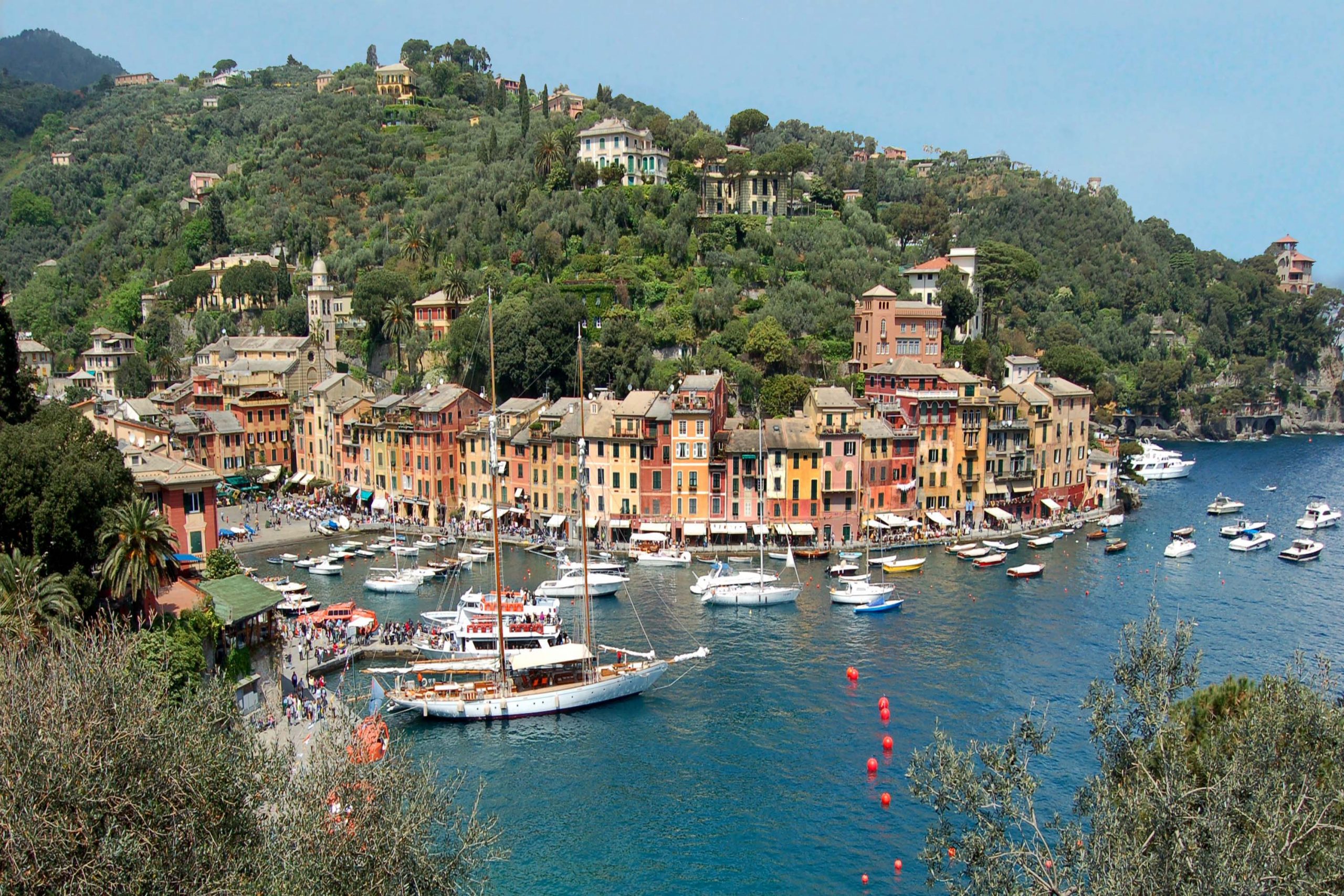
What to do in Portofino
A small village spreads like a moonbow around this calm basin.
( Guy de Maupasant)
The beautiful bay of Portofino is nestled in the greenery of the Promontory. Its atmosphere still offers a taste of bygone days with the timeless traditions connected to the sea and the painstaking artisan crafts which embody the colours and scents of Liguria.
An exclusive destination then, a magnet for world-famous personalities, where it is still possible to immerse oneself in an ancient atmosphere, made up of maritime traditions and patient craftsmanship, where the colours and scents of the Ligurian land are exalted to the maximum.

The name of this location derives from the appellation Portus Delphini, which the Romans gave to this natural inlet that opened along a coastline inhabited by many dolphins.
Even if you only have a few hours for your visit, you can still fully savour the magic of this place.
Let us then begin our walk. It is advisable to reach Portofino from the sea, using the boat service that arrives at the small harbour where the luxurious yachts of the billionaires who frequent this resort dock.
We start from the famous Piazzetta, awarded in 2012 as a historic place in Italy, a symbol of this place and of the fabulous Dolce Vita period, overlooked by elegant shops and cosy bars and restaurants
From here you can admire the typical colourful houses, arranged to frame the small harbour, silhouetted against the green hillside. A truly unique scenario.

The old village still retains its Roman structure. Wandering through its narrow streets allows you to fully savour the atmosphere of this place.
The parish church of San Martino is worth a visit. Located by the oldest nucleus of the village, it was built in the Lombard Romanesque style in the 12th century, but currently appears according to 19th-century restoration.
Inside, among other important works, there is an organ with case from 1679 by Tommaso I Roccatagliata and a wooden group by Anton Maria Maragliano.

The Church of Saint George is easily reached from the Borgo from the Piazzetta. Rebuilt in 1950 on the site of the primitive 12th-century building, destroyed during World War II bombings, the Church of St George houses some relics of the titular saint, patron saint of Portofino.
From the church square there is a splendid view of the village. The graveyard behind it is also interesting.

Proseguendo lungo il sentiero si raggiunge il Castello Brown. The scenic fortress of San Giorgio, later named Brown Castle after Montague Yeats Brown, British Consul in Genoa, owner of the manor from 1867, is a structure with Roman foundations.
Surrounded by walls, it has a turret and a central keep.
Around the year 1000, the castle was donated to the Benedictines of San Fruttuoso, then passed to the Consuls of Rapallo and, in the 15th century, to the Genoese.
In 1867, the castle was transformed from a fortress into a private residence and in 1961 it passed to the Portofino municipality.
The residence, after conservative restoration work, has brilliantly regained its natural architectural beauty, uncovering and enhancing the charm of the castle’s position of absolute dominance over the village.
A fairytale garden and dream terraces offer the most extraordinary view of Portofino.

Continuing along an easy, uphill path, we reach the Portofino Lighthouse (from the village it takes about 25 to 30 minutes). The Portofino Lighthouse cannot be visited, but it is worth going there because the view of the open sea is truly spectacular. At the lighthouse, it is possible to make a stop at the panoramic refreshment point.

Returning to Portofino, contemporary art enthusiasts can visit the Museo del Parco, an International Open-Air Sculpture Centre, located below the Church of San Giorgio, in the area descending towards the sea and accessible from Molo Umberto I. Surrounded by greenery, with extraordinary views of Portofino, it exhibits sculptures by Pomodoro, Messina, Marrai, Costa and other contemporary artists.






